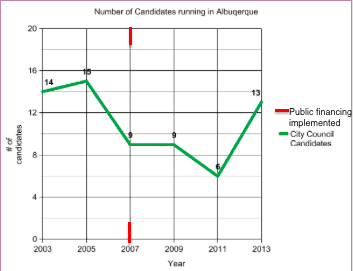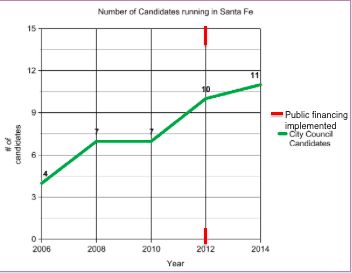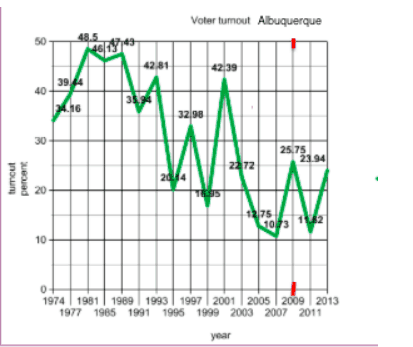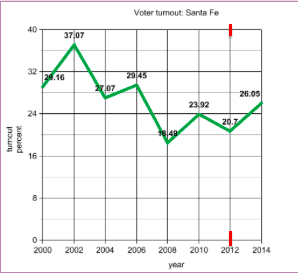Studies in other states show that public financing of elections has allowed a more diverse group of candidates and increased voter turnout, but the data doesn’t yet exist to know whether that’s happening in Albuquerque and Santa Fe, the two New Mexico cities with public-financing systems.

Pictures of Money / Creative Commons
An NMPolitics.net review of data from Albuquerque and Santa Fe suggests it’s too soon to know whether they’re experiencing trends like those found in other states after implementing public financing. (photo cc info)
The studies in other states point to public financing as helping address the problem of dropping voter turnout. In Connecticut, which implemented a public financing system for some statewide offices in 2008, public financing has not only allowed more people to run for office but helped a more diverse set of candidates get elected, according to a study by the public-policy organization Dēmos.
The report also indicated that lobbyist influence began to decline after the implementation of public financing, concluding, “Connecticut’s experience shows that public financing is a fundamental part of a stronger democracy that is more responsive to constituents, rather than big donor and special interests.”
Meanwhile, a 2008 study from Stanford University on public-financing programs in Maine and Arizona found that “programs in both states significantly increased competition in districts where challengers accepted public funding.”
Two New Mexico cities have public-financing systems. Albuquerque implemented its system in 2009, and Santa Fe in 2012. An NMPolitics.net review of data from those cities suggests it’s too soon to know whether they’re experiencing trends like those found in other states.
Number of candidates
The number of candidates running for office fluctuates between elections for different reasons. Public financing is only one factor.
In Albuquerque, the number of candidates running for office has fluctuated since public financing was implemented. Santa Fe, meanwhile, has seen an increase in the number of candidates running for office.

Number of candidates running in Albuquerque, with the red line showing the year public financing was implemented

Number of candidates running in Santa Fe, with the red line showing the year public financing was implemented
Common Cause New Mexico hopes public financing will give more people a chance to participate in city elections.
“We want to get more people out there running for public office,” said Common Cause’s Heather Ferguson. “Public financing is meant to empower people to run who normally wouldn’t have the means too.”
Voter turnout
Voter turnout is low and has been dropping recently all over New Mexico in municipal elections, Craig Fenske of Common Cause has said. Allowing those who participate in a voluntary public-financing system to accept only small contributions pushes them “to engage voters within their districts and would likely increase voter interest and turnout,” he has said.
Voter turnout has trended downward nationally in recent years. 2014 saw the lowest voter turnout nationally since World War Two.
The same is true in Santa Fe and Albuquerque. Voter turnout has dropped in recent years, with occasional upward spikes. Though these spikes may coincide with the implementation of public financing, similar spikes have happened before. It is reasonable to assume that there are other variables also affecting turnout.
There simply isn’t yet enough data to know if public financing has shifted the dynamic related to voter turnout in Albuquerque and Santa Fe.

Voter turnout in Albuquerque, with the red line showing the year public financing was implemented

Voter turnout in Santa Fe, with the red line showing the year public financing was implemented
Conclusions
As Las Cruces — which has also seen a significant drop in voter turnout in recent elections — considers whether to implement public financing, officials might look at the studies from other states to better understand how public financing can help.
As NMPolitics.net has previously reported, Santa Fe and Albuquerque are still working on improving their systems.
Public financing could also affect Las Cruces elections differently than it has in the other New Mexico cities, especially considering Albuquerque and Santa Fe have had different experiences with public financing.
However, the push for bringing public financing to Las Cruces is on hold for the moment, at least until the upcoming muncipal elections are over.
“Once we have gotten past the city elections and can really sit down and discuss it we will push forward.” Ferguson said. “We need a chance to sit down and discuss things, have work sessions and really find something that works for Las Cruces.”